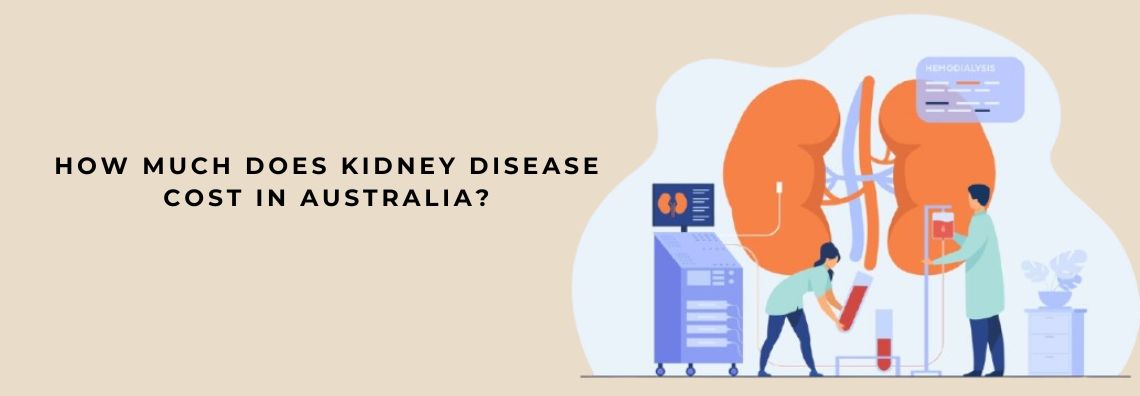
Chronic Kidney Disease (CKD) is a substantial and rising economic burden to healthcare in Australia and with CKD prevalence growing there will be greater strain and demand on public health resources. In this article we will evaluate the costs of CKD in Australia looking at direct health costs, individual economic burden, and its health impact on public policy.
Comprehending Chronic Kidney Disease
CKD is a progressive condition characterized by a slow continuous decline in the function of the kidneys over sufficient time. This causes early stages of CKD to be asymptomatic; hence detecting or identifying CKD early and managing it appropriately is vital. CKD is classified into five stages; stage 5 CKD represents end-stage kidney failure where a person requires either dialysis or a kidney transplant to maintain life.
CKD created an attributable burden of disease in Australia of about 1.1 % in 2024, which resulted in an attributable burden of approximately 65,100 years of healthy life lost from these 614 illness burdens due to premature death and disability.
Direct Healthcare Costs of CKD
The burden of chronic kidney disease (CKD) on the Australian healthcare system is high. In 2020-2021, CKD-related expenditure accounted for around $1.9 billion or 1.2% of total health system expenditure. The main driver of expenditure was hospital services, which accounted for 89% of CKD-related expenditure.
A more recent study focusing on the state of Western Australia estimated that the total direct healthcare cost of CKD in 2019 was $8.3 billion. Direct costs were comprised of all major cost components (hospital admissions; dialysis; medications; and outpatient services). The project HRIs displayed the close association between the costs of CKD and the costs of individual patients as the disease progressed; for example, the average annual cost of Stage 5 CKD patients was $62,000+.
Financial Burden on Individuals
Moreover, CKD exacts a heavy financial toll on people and their families. In addition to direct healthcare costs, patients often have out-of-pocket costs for their medications, travel to medical appointments and loss of wages due to absenteeism or disability.
In a national cohort study, individuals with CKD incurred 85% greater direct healthcare costs and 50% greater government subsidisation compared to individuals without CKD. Both direct healthcare costs and government subsidisation increased more advanced CKD. For example, patients with Stage 4 or 5 CKD incurred per-person annual direct healthcare costs of between $5,680-44,842.
The Impact of Diabetes on CKD Costs
Diabetes is an important risk factor for CKD initiation and progression. In a report by Diabetes Australia it stated that diabetes-related kidney disease costs the nation about $2.68 billion per year, with about $1.9 billion from those with kidney failure.
With increasing rates of diabetes, and its strong link to CKD, the economic impact would grow significantly. Expected rates of kidney failure are predicted to increase by 45% by 2040, and prevention, management and control could not be more timely and important.
Projected Trends and Future Implications
The economic burden associated with CKD is expected to increase in the coming decades. CKD-related expenditure increased by 37% in the span from 2012 to 2020, outpacing overall healthcare expenditure growth for that period. This trend is expected to intensify because of the elderly population growth and CKD incidence.
Without substantial intervention, costs will continue to rise and further burden our public health budgets while restricting access to care for people with CKD. Therefore, we must take action to ensure that the economic burden can be reduced.
Strategies to Mitigate
There are a number of strategies to help mitigate financial implications associated with kidney disease.
- Early Detection & Screening:
Institutions can provide comprehensive screening service for at-risk individuals, diabetes or hypertension for example, that will allow for early detection and health intervention, possibly preventing CKD from progressing to higher stages.
- Policy and Funding Initiatives:
By investing in CKD, the government can invest in CKD research, infrastructure, and healthcare workforce development and strengthen the systems needed to better manage CKD- and the costs of CKD.
- Prevention and Lifestyle Changes:
Public health campaigns promoting healthy lifestyles, which incorporate physical activity, eating properly, and stopping smoking, can aid in preventing the emergence of CKD and its complications.
Final Thoughts
Chronic Kidney Disease is an important economic challenge to Australia’s healthcare system. The overall direct healthcare costs and costs to individuals and families illustrate the need for comprehensive strategies to alleviate this issue . Implementing prevention, early detection, and effective management are ways that Australia can lessen the monetary effects of CKD and improve health outcomes for the citizens of Australia. Responsiveness to CKD is vital to address the sustainability of Australia’s healthcare system and the health of individuals with CKD. Although you can get a detailed cost breakdown by searching for a kidney specialist near me.